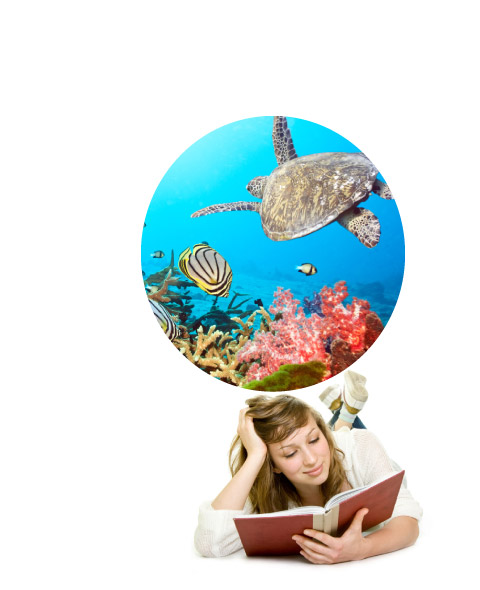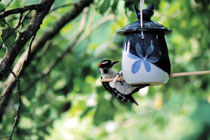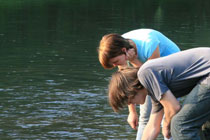
Plants, Animals, and Ecosystems
Plants and animals have adapted to changes in the environment for millions of years. However, today's changes are happening faster and on a larger scale than in the past, which makes it difficult for plants and animals to adapt. Changes in climate can affect the types of plants that can grow in an area. Animals' food supplies, water, life cycles, breeding habits, and ranges will be affected, too.
Some animals will adapt to changing conditions or move elsewhere, but others could have trouble surviving. Some unwelcome invaders (invasive species) could benefit from climate change by expanding their range or being able to survive through the winter in new places.
All these changes will affect the way ecosystems function, and changes to ecosystems affect people, too. That's because we rely on ecosystems to provide us with many services, like clean water, food, and medicines.
Learn what you can do to help plants and animals adapt to climate change:
Preserve Habitats

You can provide wildlife in your very own backyard with food, water, cover, and shelter for raising their young. And it doesn't matter whether your “backyard” is an apartment balcony or a grassy meadow. Visit the National Wildlife Federation's website![]() to learn more.
to learn more.
Protect Threatened Ecosystems

Coral reefs face a double threat as ocean temperatures rise and seawater becomes more acidic. You can help keep corals healthy by reducing other stresses on reefs. At the beach, be sure to dispose of your trash properly. If you snorkel or dive, don't touch or step on the corals. When boating, steer clear of reefs, and don't drop your anchor near them.
Check out 25 steps, big and small, that you can take even if you don't live near a coast. Take an expedition to Australia to learn more about the threat to coral reefs...and what we can do about it.
Be a Citizen Scientist

Volunteer to keep records of the seasonal changes you see in nature, such as when certain flowers bloom in the spring. You can be part of a network of citizens who are gathering important information that can help scientists understand how climate change is affecting plants and animals. Learn more about how you can be a scientist, too!
Help America's wildlife refuges manage invasive plants.![]()
- I am in danger of extinction because the sea ice where I live is melting. I was recently added to the list of threatened species in the United States. By the way, I live only in the Arctic and not in the Antarctic, as some people think! What am I? Reveal answer
Polar bear
- Over the past four decades, bird species that spend the winter in North America have moved further north by an average of: Reveal answer
- 15 miles
- 25 miles
- 35 miles
C
- An average water temperature increase of just a few degrees Fahrenheit can cause harmful bleaching in coral reefs. True or false? Reveal answer
True